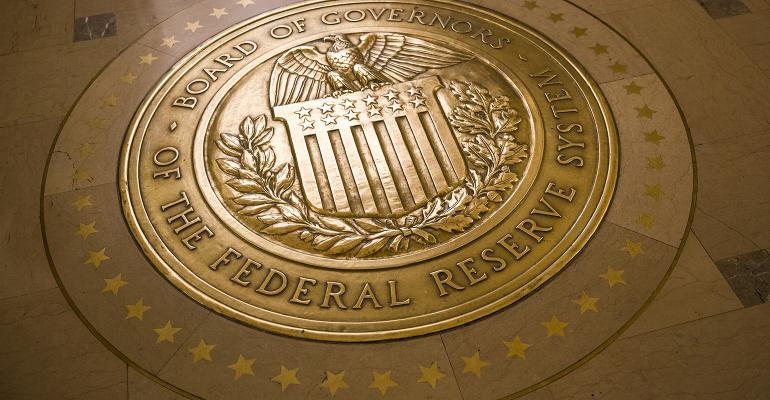In 2023, a year that was characterized as exceptionally challenging, gold as an asset outperformed most expectations. Amid high interest rates, geopolitical events and an unclear direction of travel from the Federal Reserve’s rate-setting committee, gold returned just over 13% on an annualized basis. And as we move through the beginning of 2024, several factors that influenced gold’s strong performance last year are again well-positioned to support the demand for the metal and its price performance.
Most investors are speculating as to whether the Federal Reserve can achieve a so-called “soft landing” in 2024, and this remains the top factor advisors evaluate as they look to hold or adjust their allocation to gold. Looking at the past two decades, portfolios that include some gold investment would likely have outperformed an equivalent portfolio that didn’t invest in gold.
While other influences will impact gold’s performance looking ahead, the Federal Reserve’s decision making is set to play a key role. Last year, market watchers shifted away from predictions that the Federal Reserve would continue hiking interest rates to tame inflation. As the year progressed, key indicators signaled the Fed’s rate policy was having its intended impact and that inflation was falling. Today we find the Fed has paused on any further rate hikes, with its last hike taking place in July 2023.
Investors may believe that higher interest rates tend to make assets that generate yield without having to be sold, like bonds, relatively more appealing than the precious metal. But because it has no risk of default (i.e., no credit risk), gold’s yield comes in the form of price appreciation, not coupons or cash flows. The current “pause” in interest rate increases—and the potential for cuts—could enhance gold’s attractiveness relative to assets like bonds, which have benefited from the recent elevated rate environment.
As we look ahead to 2024, all eyes remain on the Fed and if Jerome Powell can navigate the economy to a manageable outcome. And that remains a big “if”—wage growth is strong and if consumer prices remain stubbornly high, that could portend interest rate cuts later in 2024 than previously expected. Indeed, there’s a huge range among rate forecasters on how much the central bank might loosen its policies with rate cuts this year. If the economy tips toward a recession, the Fed could speed up consideration of rate cuts. Consumer spending might slump in this scenario, which may impact certain areas of demand for gold products, like jewelry. However, demand among some of the gold market’s biggest participants—investors and central banks—in a lower interest rate environment will see the “investment and savings” demand for gold pick up.
We’ve laid out three simple scenarios that will help investors to better navigate the broader economic landscape while understanding the impact it will have on the performance of gold.
Soft Landing: The market consensus is that this is still the most likely scenario to develop. The U.S. economy continues to show resilience, unemployment levels are modest, and U.S.-based companies have reported strong underlying metrics. This would lead to Fed cuts at some point in 2024 (as gauged by the CME FedWatch Tool), and our view is that cuts of 75-100 basis points could be to the benefit of gold since that often correlates with heightened demand.
Hard Landing: However, if the economy experiences a more severe “hard landing,” the Fed will have no choice but to move swiftly with even steeper cuts, correlating with even higher demand potential for gold. While recession puts downward pressure on consumer retail demand (like jewelry), central bank and investment demand would be higher, and that overall outlook would nonetheless be positive for gold.
No Landing: This scenario—where we are today—presents the most challenging environment for investors to navigate and its gray area leaves the potential for an unexpected spike in inflation. This could leave us with “more of the same” from the Federal Reserve if it kicks the can further on rate cuts, and a resulting longer runway before we see actions that add upward pressure on gold prices. While there is no immediate clarity on the timing of rate cuts, expectations of cuts led to a buoyant December 2023 and gold hitting all-time highs. These expectations have again been tempered, and expectations for cuts have moved to later in 2024. This all begs the question: will we see this challenging environment last longer and longer?
While these primary scenarios all specifically address the US economic landscape, we should not overlook the fact that there is more to gold than can be illuminated by only one factor. Gold is a global asset, and its diverse sources of demand set it apart. The potential for future, unexpected geopolitical, political and financial event risks – both at home and abroad – is prevalent and can have a significant impact on the interest in the gold market and, more importantly, its performance.
Advisors should avoid falling into the trap of getting overly focused on one specific driver of gold’s performance. Looking ahead into 2024, there are still major factors that can impact the demand for gold, including geopolitical turmoil, political elections at a scale never before seen, and an overall risk environment driving many global pools of capital (either through Central Bank reserve portfolios or investment portfolios) to gold.
Joe Cavatoni is Senior Market Strategist, Americas, World Gold Council

